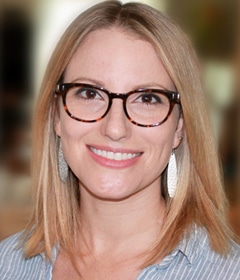Diversity Officers Share Insights on Pioneering New Roles in Higher Education
The Chief Diversity Officer role is relatively new to higher education leadership — but at the same time, sorely overdue. After a long history of institutional inequity, some universities are responding to the nationwide call for change by prioritizing and delivering on diversity, equity, and inclusion needs through this new position.
Like any force for change, the chief diversity officers currently driving progress face a mix of challenges and opportunities. To help those in or considering a career in this role, Sherri Ann Charleston, chief diversity and inclusion officer at Harvard University, and Georgianna Melendez, assistant chancellor of diversity and inclusion at the University of Massachusetts–Boston, shared their experiences as trailblazers in academic diversity roles during a March 30 webinar with ACUI members.
Moderator Stacey Givens, director of strategic initiatives and senior diversity officer at ACUI, kicked off the discussion by asking an essential question for anyone looking to serve as a chief diversity officer: What qualifications are required to become a diversity, equity, and inclusivity professional?
Melendez said a doctoral program in the field or related acts as considerable currency during the job hunt. “If you’re working in higher education, the reality is faculty value a terminal degree,” she said. “Will not having one preclude you from getting the job? No, but it definitely carries weight, and the knowledge is worth it.”
Depending on rank, some academic diversity roles also require a minimum of three to five or even five to seven years of experience, which helps sharpen political instincts, among other skills. “Working in DEI can be interpreted as serving on restorative justice commissions, leading diversity work within student affairs or other spaces, and sometimes, it means a lower position within a DEI office and moving up.”
Charleston suggested that prospective diversity officers consider the who, the what, and the how.

“Who do you want to serve? Full-time DEI roles can take any number of directions,” she said. “How do you want to do it? For example, I prefer to think about strategy pieces rather than the direct student services pieces, but let’s say I was interested in supplier diversity; I could still do DEI work that way. And then what do you want to do? People think of CDOs as one-person shops, but as we develop a more expansive view of DEI infrastructure, there will be room for a variety of skill sets.”
In addition to understanding the deep complexities of diversity, equity, and inclusion, diversity officers must also navigate various challenges in promoting and fostering change.
“Many universities are still hiring their first CDO,” Charleston said. “This is recent history. While other functions at the university have already been carved out, you are effectively creating a new space. That is intense work.”
“You have to identify the problems that you’re going to fix, and you have to have the political savvy to select the right people to help you with that work,” she continued. “Often, you’re educating an organization about what the work is as you’re learning the organization — and they want you to fix all of their problems yesterday. That’s the conundrum, because multiple structures probably need adjusting, and it takes a while to assess and turn them over.”
Melendez said that without buy-in from leadership, it can be difficult for a diversity officer to implement meaningful diversity initiatives. “Talking to colleagues in the space, there are a range of experiences you can have,” she said. “It’s a different experience to work at an institution with leadership support than under someone who says they’re committed to DEI but don’t really commit to it or offer inadequate resources to make progress.”
Another challenge that is commonly faced is resistance to diversity initiatives, which may be perceived as a threat to the status quo. “Find your allies and find your support system because the biggest challenge is often how isolated you feel doing the work,” Melendez said. “If you’re a compliance officer, and you do investigations as part of your role, expect to take those feels up a notch.”
When asked how diversity officers navigate frustration with the slow nature of diversity work, Charleston said to remember that negotiating with leadership — convincing them to try approaches they may never have considered — is a substantial, albeit difficult, part of the job — and it takes time.
Communication is critical as there are often no clear metrics to track progress.
“You have to have a strong communication strategy from the beginning because you can do things that take a lot of time, energy, and political capital, but if you don’t know how to convey them to your constituency, they will never know you did it,” Charleston said.
Finally, Melendez recommends being mindful of rapid change in the diversity space. “Leadership changes, your student population is constantly evolving, but the work is still needed,” she said. “Stay with it, knowing that your projects may change.”

